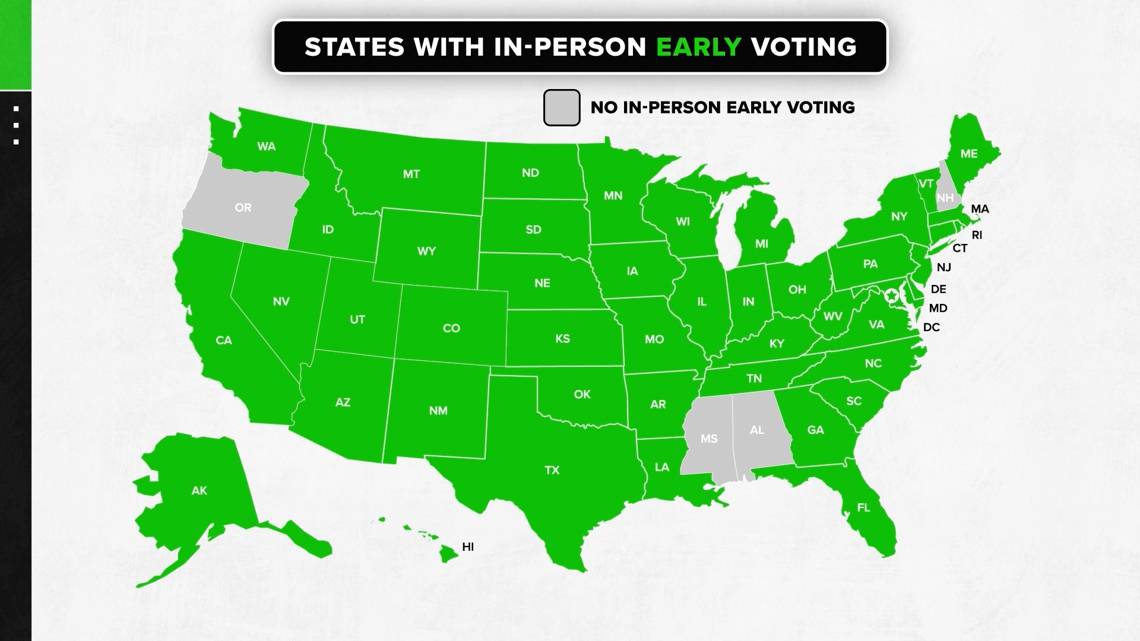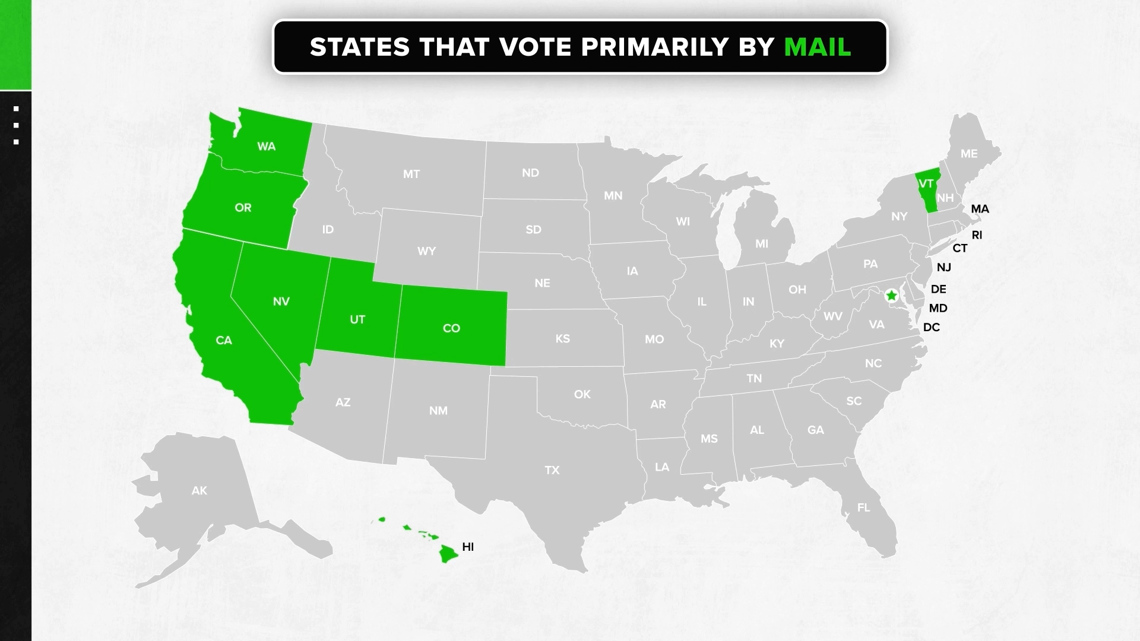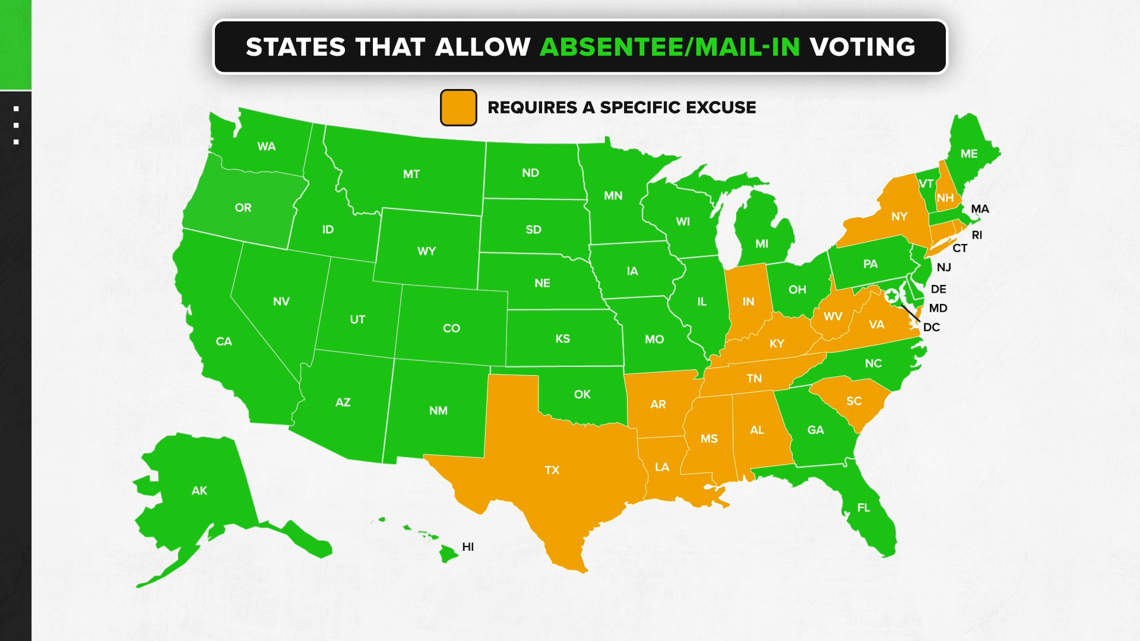The 2024 general election will be held on Nov. 5.
For the past several weeks, VERIFY has been answering common questions to help you become a more informed voter. Here are four fast facts about this election, from what’s at stake to when we’ll know the results.
If you have other questions about the election, you can email us at questions@verifythis.com or message us on social media @verifythis.
THE QUESTION
Do votes for Robert F. Kennedy Jr. automatically get passed to Donald Trump, because Kennedy dropped out and endorsed Trump?
THE SOURCES
THE ANSWER
No, votes for Kennedy will not get passed to Donald Trump.
WHAT WE FOUND
After initially seeking the Democratic nomination for president, Robert F. Kennedy, Jr. launched an independent campaign and spent several months trying to ensure his presence on the ballot in as many states as possible.
In August, Kennedy ended his campaign and endorsed the Republican nominee, former president Donald Trump. Kennedy then began filing to have his name removed from ballots in many states.
But in some states Kennedy will remain on the ballot. In the key swing state of Michigan, for instance, the state Supreme Court ruled his name cannot be removed.
Since there are no laws that allow votes to be transferred from one candidate to another, any votes for Kennedy in Michigan (or any other states where he stays on the ballot or is written in) can only go to Kennedy, even though he’s no longer running.
Those votes could still potentially impact the election, since the race between Kamala Harris and Donald Trump might be decided by only a few thousand votes in some states, meaning any votes going to third parties could sway the final outcome.
THE QUESTION
Can I cast my ballot before Election Day?
THE SOURCES
- National Conference of State Legislatures
- Various state laws
- Various state elections offices
THE ANSWER
Yes. Every state allows for some form of early voting. Specific timelines and methods vary by state.
WHAT WE FOUND
Election Day is Nov. 5, but if you can’t vote that day or want to cast your ballot sooner, there are ways to do it in every state in the country.
In 46 states plus D.C., in-person election centers will be open to voters early. Specific days, hours, and locations vary by state. Some centers open as many as 46 days in advance while others are only open for a few days ahead of Election Day.


Another way to receive and submit a ballot early is via mail-in voting.
In eight states plus D.C., elections are conducted primarily by mail and so every registered voter will automatically receive a ballot. According to state laws and elections offices, those ballots should arrive to voters sometime in October.


All 50 states allow some form of mail-in voting, usually called absentee voting, which could also allow people to vote early.
Most states will send an absentee ballot to any voter who requests one. In 15 states, voters have to provide a specific excuse for needing an absentee ballot, though it can often be something as simple as being out of town on Election Day.


Deadlines to request absentee ballots vary by state, ranging from three weeks before the election to the day before.
THE QUESTION
Are results always finalized on election night?
THE SOURCES
THE ANSWER
No. Results can take days or weeks to finalize.
WHAT WE FOUND
Election results are not finalized on Election Day; each state has a different timeline for certification that can last for weeks. This is a normal part of the election calendar and does not mean something went wrong.
Some states take longer than others to process ballots, whether because of low staffing, rules on when they can start counting, or waiting for mailed ballots to arrive.
We don’t know exactly when each state will publish final results, but they do have legal deadlines. Some states require local elections offices to certify their results the day after the election; others give them a month. Then the states usually have a few extra days to add up and certify the statewide vote.
For presidential elections, federal law requires all states to certify their results by Dec. 11.
Although the results may take weeks to finalize, races may be “called” well before then. Various news agencies and political groups use teams of experts to analyze election results as they are made public, and declare probable winners based on those assessments, which are based in part on demographic and historical data.
Losing candidates may often concede their race when such calls are made. But neither a media call or a candidate concession has legal weight; only the certified results matter.
THE QUESTION
Can the balance of power in Congress change as a result of this election?
THE SOURCES
THE ANSWER
Yes. Polls suggest it’s possible for either party to earn the majority in either the House of Representatives or the Senate.
WHAT WE FOUND
The White House isn’t the only thing up for grabs on Nov. 5. Democrats and Republicans are also battling for majority control in the Senate and the House of Representatives.
Right now, Republicans narrowly control the House, holding 220 seats to Democrats’ 212, with three seats currently vacant.
Since representatives are elected every two years, all 435 seats are being contested in this election. Of those, polling experts estimate 202 are solidly or likely Republican and 190 are Democratic, meaning the balance of power will likely be decided by the remaining 43 districts.
Winning the majority in the House gives the controlling party the ability to unilaterally pass legislation, though bills would still need approval from the Senate and president to become law. The House can also introduce and pass articles of impeachment.
Majority rule gives that party the ability to run committees, which can hold hearings and order people to testify or provide documents. And the party gets to select the Speaker of the House, whose powers include deciding which bills the House will vote on.
In the Senate, Democrats have an even narrower majority right now. There are 47 Democratic senators plus four independents who caucus with the Democrats, and 49 Republicans.
Thirty-eight Republicans and 28 Democrats are not facing reelection this year, since senators are only elected every six years. In addition, pollsters expect 11 seats up for election are solidly or likely Republican and 15 are Democratic. That means the balance of power in the Senate will likely be decided by just 8 races.
In addition to running committees and influencing which bills get a vote on the Senate floor, the majority party in the Senate has the ability to confirm or block judges and cabinet appointees, which require a simple majority for approval. In the event of a 50-50 tie, the vice president is the deciding vote.
When it comes to legislation, a simple majority is technically all that’s required for the Senate to pass a bill. But in practice, 60 votes are often required thanks to a unique Senate rule called the filibuster, which makes it possible for the minority party to block legislation.
There is one exception that allows a majority party to circumvent the filibuster in rare cases and pass a bill without a 60-vote supermajority. A quirk in the rules allows for one budget-related bill per year to be passed with only a simple majority in each the House and Senate. This was used by Democrats in 2022 to pass the Inflation Reduction Act.



